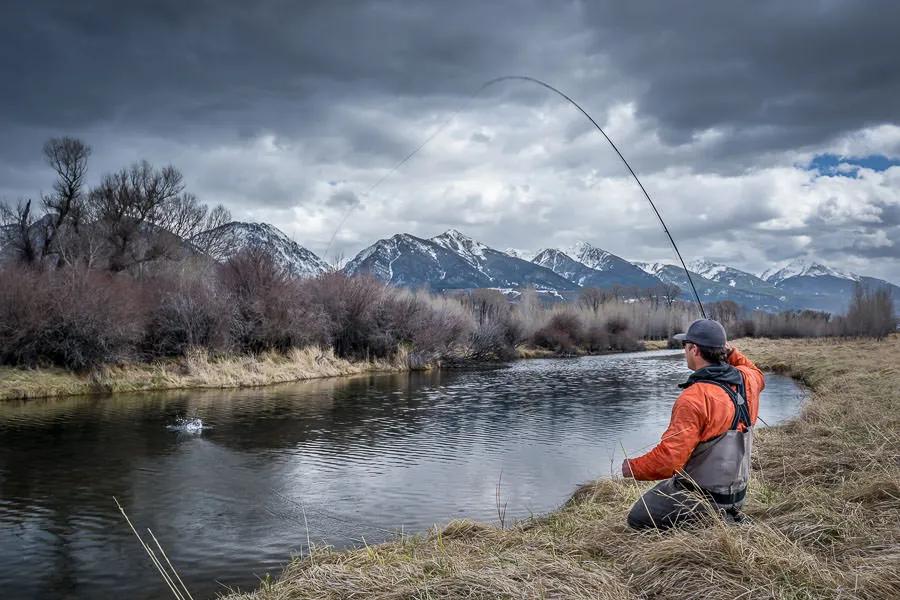
We have all heard it, “you should have been here yesterday.” Such a statement begs the question, “Why yesterday?” The reason yesterday was better most often relates to the environmental conditions of yesterday. A myriad of conditions heavily influence the behavior of trout. Where trout are found, what they eat and how much they eat and are all dependent on a few very important variables. As guides we are constantly checking these factors and taking them into account in an effort to maximize our time on the water.
When targeting Montana's wild trout every angler should pay attention to 6 important variables: barometric pressure, lighting, water clarity, water temperature, current speed, and the dominate food source.
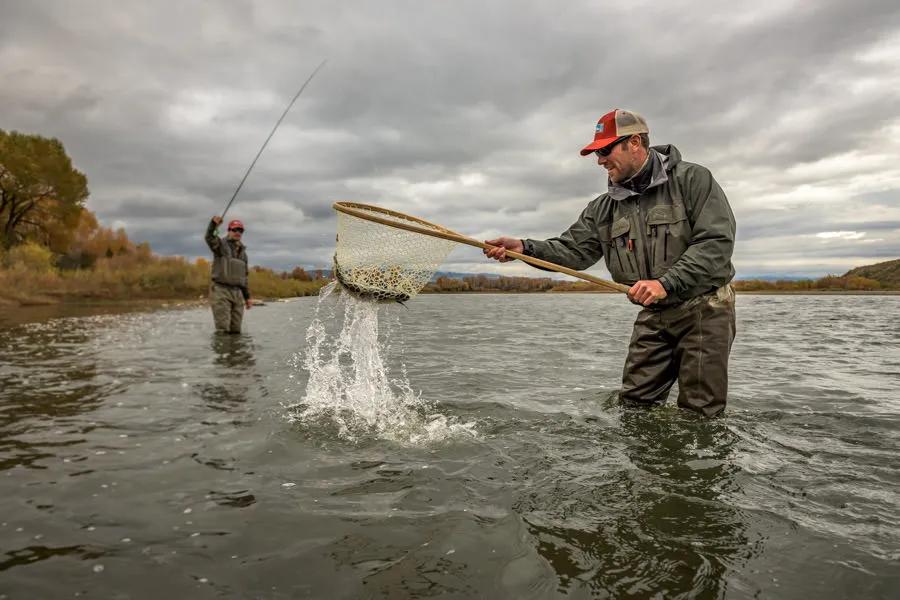
1. Barometric Pressure
Barometric pressure is often referenced, but rarely understood when it comes to fishing conditions. Barometric pressure is simply the measured value of atmospheric pressure. Barometric readings are the physical pressure the atmosphere places on everything underneath it, usually measured in mmHg- millimeters mercury. Generally speaking, as humans we are somewhat oblivious to barometric changes, however you have probably experienced or heard of folks that are sensitive to these changes and experience increased aches in their joints or an old injury when a storm is on the way.
While we are just mildly aware of barometric pressure, trout and other fish are highly attuned to these atmospheric changes through their sensitive lateral lines. Aquatic insects are the main food source for trout and these same aquatic insects are also influenced by atmospheric pressure. For example, midge emergences are heavier under higher pressure as the increased pressure correlates to stable weather while certain species of mayflies such as Blue Winged Olives and Pale Morning Duns emerge at much higher rates under falling pressure.
As a whole, trout respond best to consistent conditions. A stable barometer provides consistent pressure and generally consistent fishing. Trout will also feed heavily at times on a falling barometer as they sense a change in weather is on the way. Falling barometers often occur in parallel with an increase in cloud cover which can help intensify mayfly hatches and coax larger trout that are light sensitive into feeding later into the day.
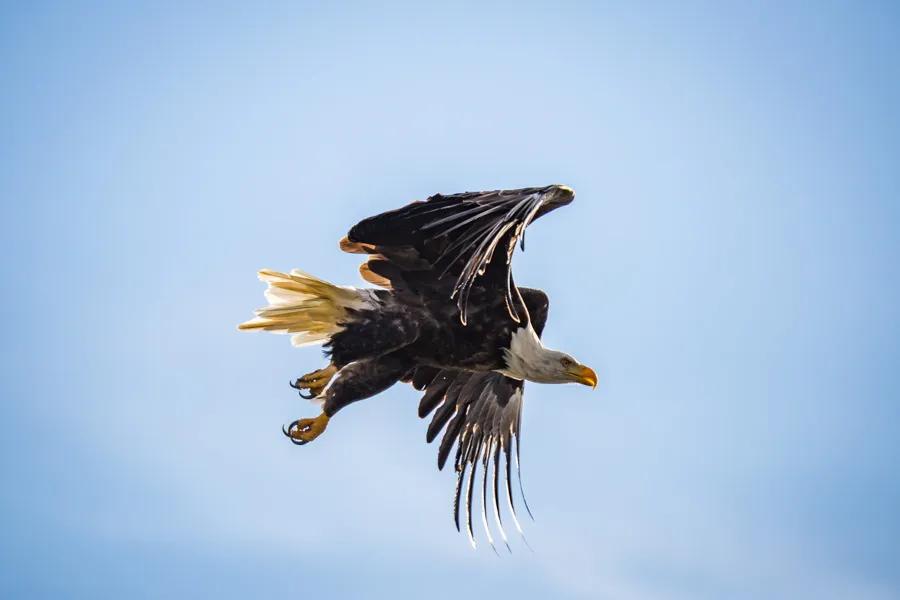
2. Lighting
Death from above is a serious concern for all fish, but especially for those fish that swim below the raptor laden skies of Montana. Lighting conditions play multiple roles on how the trout we seek behave. Lighting conditions can be thought of as either low light or bright. Low light conditions are found either at dawn or dusk OR when there is heavy cloud cover. Bright light occurs when the sun is high in the sky with clear skies. Clear skies and bright light conditions allow for better predatory sight, making trout more vulnerable and encourage them to slide off of the banks, hold deeper, and relate tighter to structure. If you have ever spent time sight casting for trout in rivers or bonefish on the flats you have learned that spotting fish is much easier on a bright sunny day. Trout know this too and are much less likely to easily expose themselves when the sun is high.
Structure where trout will hide when the sun is high can include cut banks, log jams, large boulders and weed beds. If the light is darker trout will move further to eat a fly, while the opposite is observed with tight holding fish under bright skies. In the low light hours of dawn or dusk, or when there is heavy cloud cover trout will often take more risks and move into shallow flats. Food supply is also often affected by lighting. Some insects such as early season midge hatches prefer warm bright days in the early spring. Many mayfly species such as Blue Winged Olives, Pale Morning Duns and March browns hatch in much more abundance on cloudy days. If you encounter a late June day with heavy cloud cover it will encourage flotillas of PMDs to hatch while big browns and rainbows let their guard down and move into shallow flats or riffles to feed with reckless abandon. The same stretch of water on a bright and sunny day may be devoid of trout.

3. Water Clarity
Water clarity can further dictate a trout’s position in the river. Like cloudy skies, tea colored or stained water (characterized by less than 2 feet of visibility) can encourage trout to move into shallower lies and leave protective structure behind. Fish are also more likely to cruise and hunt in these water conditions. Stained water is not a bad thing, it can produce some excellent fishing. Fly selection does not need to be large so the fish can “see it”. Large streamers stripped through holding water can be effective. For nymphs try choosing large stone fly imitations, sculpins and worm patterns are often more effective than smaller patterns that imitate caddis or mayflies simply because they are harder for trout to spot in colored water. The depth one fishes is also important. Stained water often coincides with increased flows which can kick loose more food, thus encouraging heightened feeding activity. Trout often move into shallower bank water during higher flows when the river is off color. Conversely in clear water (clear to green in color with more than 2 feet of visibility) trout tend to act with more caution and may be deeper for protection.
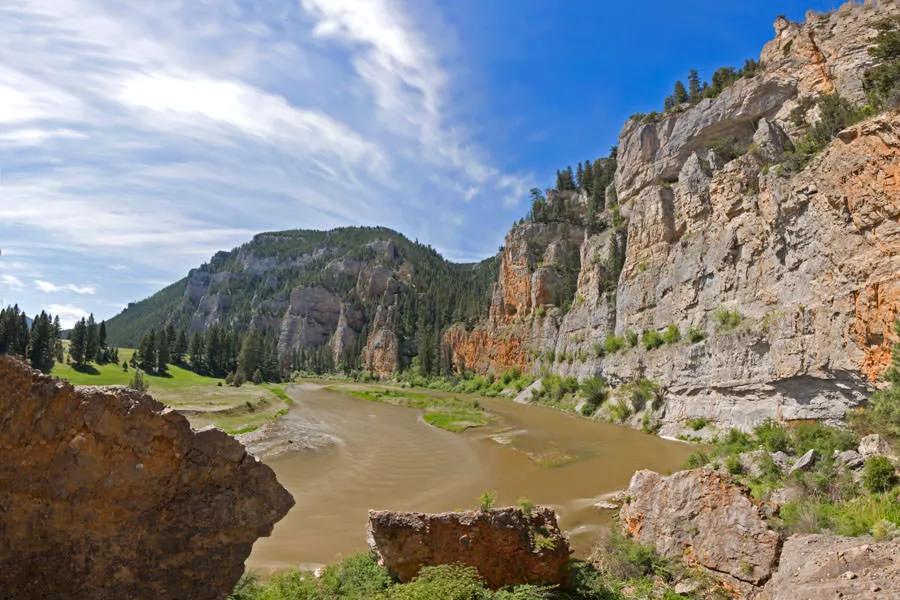
4. Water Temperature
Water temperature is arguably the single most important variable that impacts trout behavior. The water temperature heavily sways metabolic rates for fish and the activity of aquatic insects. In short, the water temperature dictates how much, how often, and what the trout are eating. Because trout are cold blooded their body temperature is directly related to the water temperature. A metabolism is essentially a series of chemical reactions that turn food into usable units of energy. These reactions are largely temperature and oxygen dependent. As water temperatures increase trout metabolism increases while oxygen levels decrease. Warmer water temps are good up until oxygen becomes a limiting factor. Once water temperatures start to rise into the high 60s oxygen depletion is a real issue and trout reduce their level of feeding and are also more easily stressed. Hatcheries often prefer water temperatures in the mid 50s to optimize trout growth.
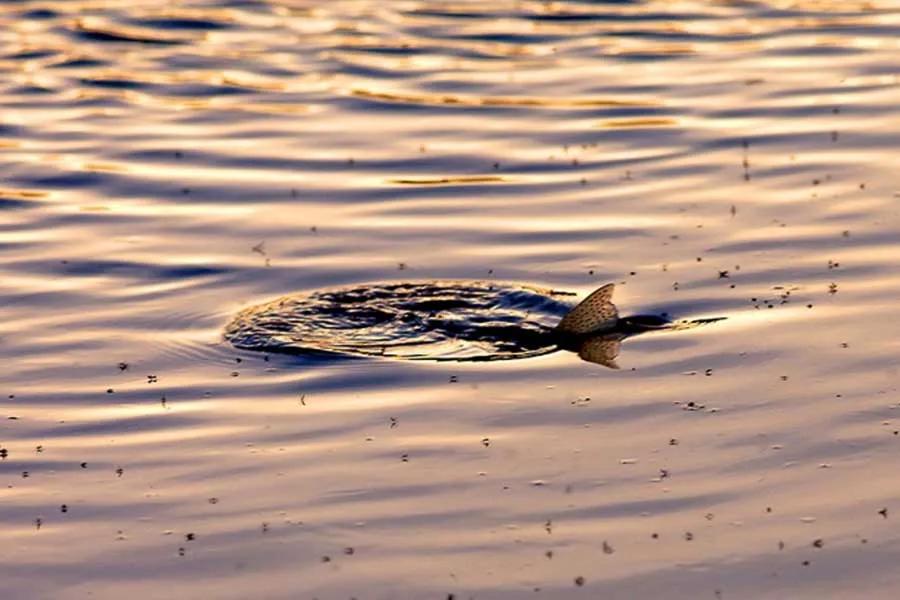
Colder water temperatures tend to make trout lethargic and they are mainly concerned with conserving energy. They eat very little and hold in slow, soft water. When water temperatures are less than 45 degrees expect to find trout in "winter time" runs. Look for the deeper runs with slow to moderate current. Trout will still feed during cold water periods but they will prefer the warmest temperatures of the day. Generally in winter, early spring or late fall expect the afternoon fishing to be more productive than the early morning. Often temperatures in a stream or river will swing by 6-8 degrees F between morning and late afternoon.
Cold water doesn't mean poor fishing. Remember trout are highly concentrated in their locations within the river and also feed in a compact period during the afternoon. This makes them relatively easy to target. A sunny afternoon in February can produce spectacular dry fly fishing for those willing to brave the cold. Although dry fly fishing is possible in the cold winter and early spring months in Montana, nymphing is more the norm. The low temperature fly presentation is characterized by flies that are fished just off the bottom and practically tumble into the mouths of holding trout. Remember trout are concentrated but also conserving energy. It pays to adjust weight and leader lengths with a delicate yarn indicator until you find the right rig. Make sure you are ONLY fishing the holes that have high trout counts and expect subtle takes.
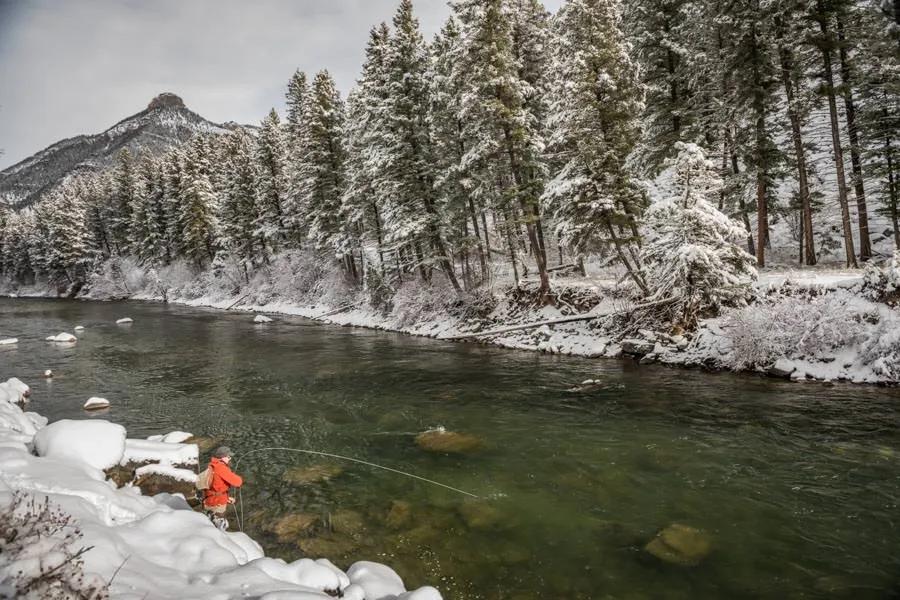
Prime water temperatures occur between 48-65 degrees. Under this range of water temperatures trout are most active. They are willing to move far from their lies to intercept food. Even with prime water temps there will still be windows of the day when the fishing peaks. Often this occurs around insect hatches. Paying attention to the preferred water temperature of the dominate insect hatching at the time will help you predict peak activity levels for trout. Pale Morning Duns, for example will hatch after lunch under "colder" waters on spring creek but before lunch on a river with warmer water temps. Often times multiple emergence events will be occurring on a river system and its important to identify what the fish are targeting. For example, beatis are still active in 50 degree water and found throughout the moderate riffles and glides. In the faster rifles, caddisflies are also prominent and usually the pupae are a preferred food source. As temperatures increase and the summer progresses we see hatches in roughly the following order: midges, Blue Winged Olives, March Browns, Mother's Day caddis (brachycentrus), Salmon flies, Pale Morning Duns, golden stoneflies, yellow sallies, green drakes, spotted sedge (hydropsyche), epeorus mayflies, and nocturnal golden stones. The bulk of aquatic insects listed will hatch from June to July. When water temperatures are prime and there are not active hatches, fish sometimes spread out within the river. It can pay to cover a lot of water while prospecting for fish. Float fishing can be very effective. If you are wading try to cover a few miles during your fishing outing and focus on finding those aggressive trout.
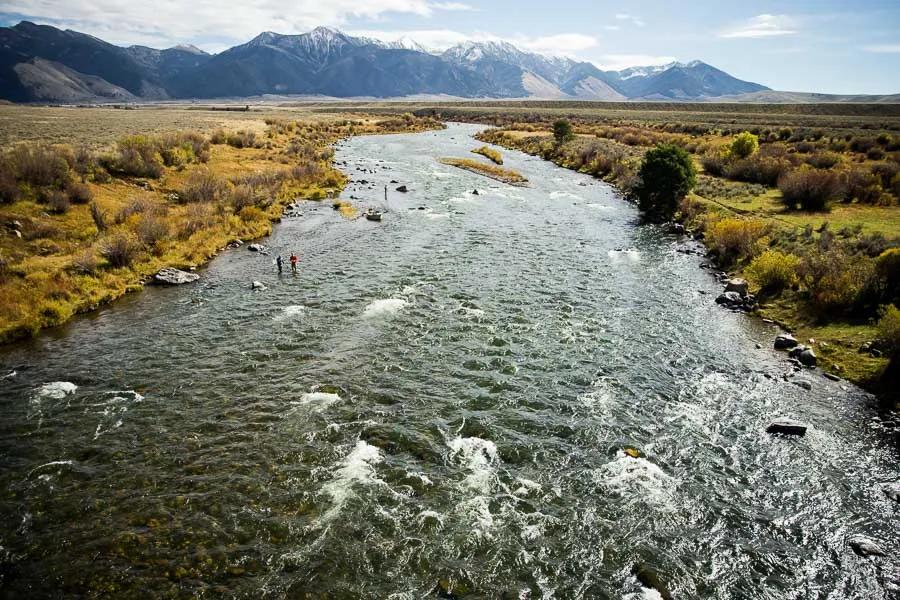
Warmer water temperatures result in declining trout activity as dissolved oxygen levels drop. As water temperatures exceed 65 degrees fish activity begins to decline. Trout will then seek out areas of cooler water including springs and seeps. Additionally, trout will seek shade and find deep areas to escape the pressures of the sun. Finally trout may concentrate in faster aerated water due to higher oxygen levels. If one has to fish warm water conditions it’s best to employ a “Dawn Patrol” strategy and hit the ramp at first light with plans for a late lunch and early departure home. Look for fish in the fast water around their daytime refuge points. At these temperatures consider fishing fast and searching for the most aggressive fish with streamers or terrestrial patterns. Night fishing can also be very effective in the lower flows of late summer when water temperatures peak. Often the coolest water temps are late at night. When night fishing focus on a few big fish runs and try swinging large streamers with a slow strip retrieve. Pay close attention to water temperatures to protect trout. When water temperatures are in the low 70s trout may still be feeding but they are very easily stressed and catch and release mortality rates increase.
5. Current speed
Current speed is one of the most important variables when targeting trout in streams and rivers. On one hand, the current is the conveyor belt that delivers trout food. River trout generally remain stationary and let the current bring them food as it washes insects down the river. On the other hand, current also forces a trout to expend energy. When trout fishing we need to identify what is the perfect current speed based on conditions to locate feeding trout. We have already mentioned that colder water tends to move trout into slower currents while warm water may push trout into fast, oxygenated water (at least while feeding). Another important factor to identify the correct current speed is to ascertain if trout are feeding actively or not. If there is a hatch and trout are actively searching for food they will seek out relatively faster water. If you are fishing cold water in mid-winter they may slide from the deepest and slowest currents of a large "winter" hole into slightly faster water near the top of the run for the short afternoon feeding window. In mid summer them may slide into very swift riffles when during a hatch or when hunting baitfish. This effect is very pronounced on our local spring creeks during big hatches. On an early July morning trout will be highly concentrated in the deeper and slower water before the PMD hatch begins. To target fish when they are not actively feeding you need to slow things down with a nymph rig and place it directly to the trout. As the pale morning duns begin to hatch, nearly every trout in the river slides out of their resting water into faster riffles to intercept the food supply and you need to change tactics accordingly.
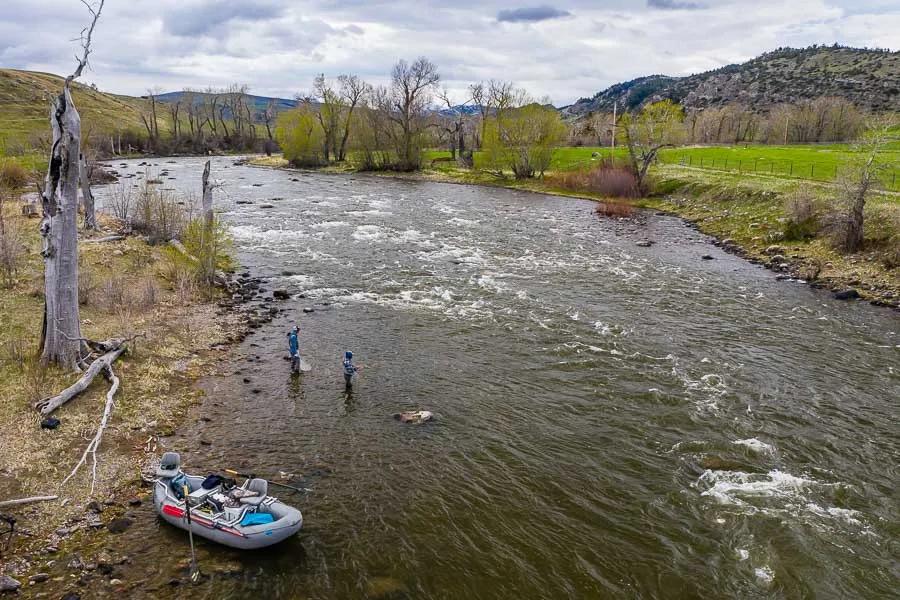
6. Dominate food source
We catch trout with a simple recipe: imitate something that they like to eat. Trout tend to put blinders on when there is one food source that is found in great abundance. Aquatic insect hatches will often produce a single dominate source of food. During periods when hatches are taking expect peak feeding activity to coincide with these daily hatches. It is important to synchronize your time on the water to intercept these insect emergences. Furthermore you need to tailor your fly selection to "match the hatch". If it is a windy August day and hoppers are being blown into the river the trout want hoppers and nothing else. If this is a daily occurrence morning fishing can be very slow, the trout are just waiting until things get good when the wind picks up after lunch. It is also important to understand when trout are not keyed in on one dominate food source as well. Under these conditions when no single source of food dominates, trout will be opportunistic. When a lack of a single food source occurs consider developing a strategy that helps you to maximize success. For example, you might consider upsizing your flies to fish a big sculpin pattern to hunt for larger trout. Another option might be to avoid a lot of fly changing but focus on a run and gun approach with a an attractor dry fly with a nymph dropper and try to cover as much water as quickly as you can to pick off the most active trout.
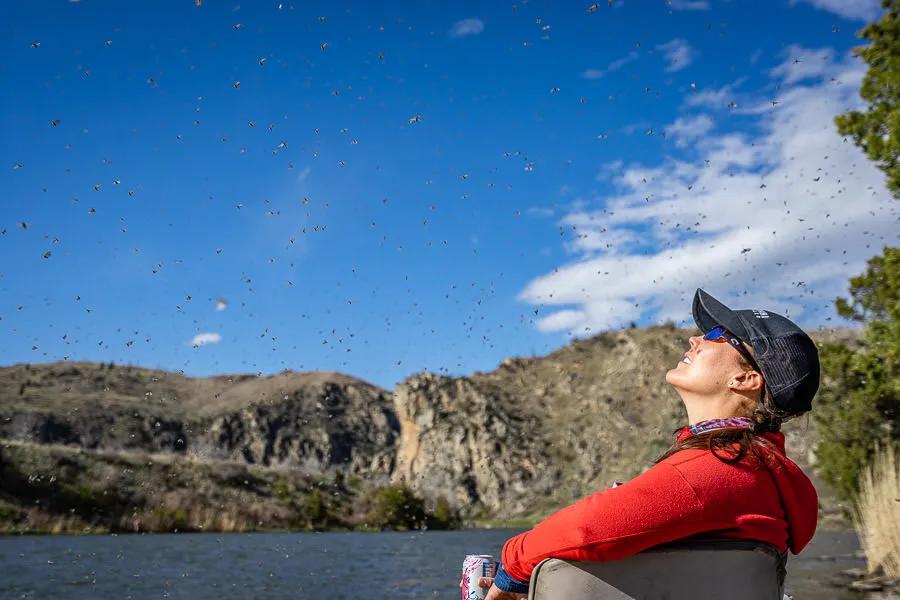
Environmental conditions play a major role in your prospects for fishing success on our Montana rivers. As pressure systems move in and out, light changes, temperatures fluctuate, and hatches wax and wain; trout will adjust their feeding habits accordingly. Understanding how these important variables impact trout behavior will help you predict where to find trout and how to target them.
